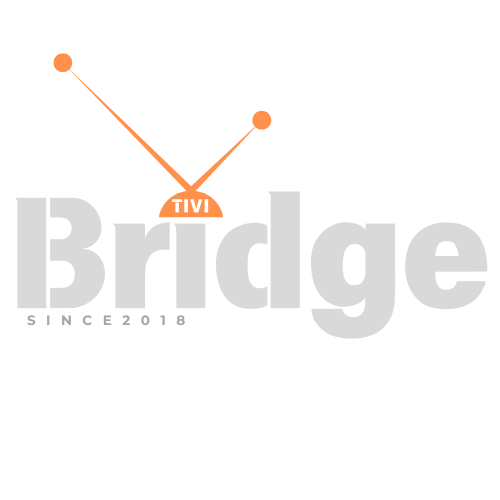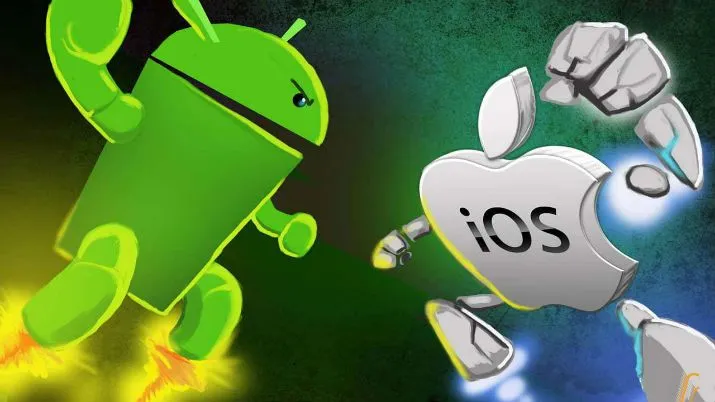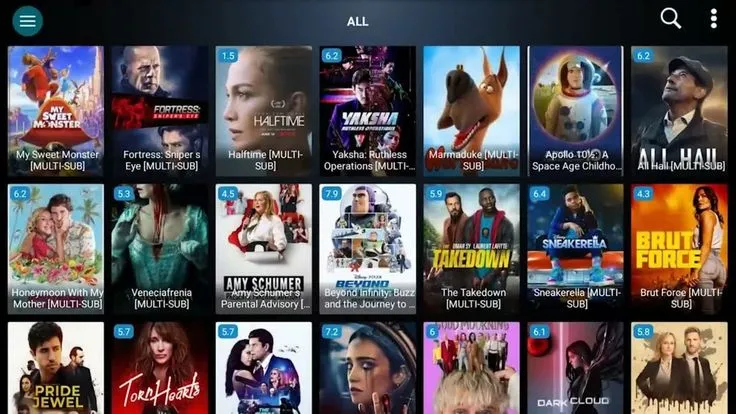Revolution in Digital Media IPTV
Revolution in Digital Media IPTV The digital media landscape has undergone a revolutionary transformation that’s reshaping how we consume entertainment. At the heart of this ongoing revolution lies Internet Protocol Television (IPTV), a groundbreaking technology that’s disrupting traditional broadcasting methods and offering viewers unprecedented control over their viewing experience. This comprehensive guide explores how IPTV is leading the charge in digital media innovation, helping you understand why millions are making the switch to watch live TV through internet-based platforms.
What is IPTV and Why Does It Matter?
Internet Protocol Television represents a paradigm shift in how content reaches your screen. Unlike traditional cable or satellite broadcasting, IPTV delivers television content through internet protocols, enabling a more flexible, personalized, and cost-effective viewing experience.
The Core Technology Behind IPTV
IPTV operates on three fundamental service models:
- Live Television: Real-time broadcasting of channels through internet protocols
- Video on Demand (VOD): Access to vast libraries of movies and shows
- Time-shifted Media: Recording and playback capabilities for enhanced convenience
This technology leverages existing broadband infrastructure to deliver high-quality content directly to connected devices, eliminating the need for traditional broadcasting equipment.
The Driving Forces Behind the Digital Media Revolution
1. Consumer Demand for Flexibility
Modern viewers crave control over their entertainment experience. The ongoing revolution in digital media responds to this demand by offering:
- On-demand access to content libraries
- Multi-device compatibility across smartphones, tablets, smart TVs, and computers
- Personalized recommendations based on viewing habits
- Flexible subscription models tailored to individual preferences
2. Technological Advancements
The rapid evolution of internet infrastructure has made IPTV services more reliable and accessible:
- 5G networks enabling seamless streaming on mobile devices
- Fiber optic connections supporting 4K and 8K content delivery
- Cloud computing facilitating scalable content distribution
- Advanced compression algorithms optimizing bandwidth usage
3. Economic Factors
IPTV presents compelling economic advantages for both providers and consumers:
- Lower operational costs compared to traditional broadcasting
- Reduced infrastructure requirements for service providers
- Competitive pricing attracting cost-conscious consumers
- Targeted advertising opportunities increasing revenue potential
How IPTV is Revolutionizing the Entertainment Industry
Content Creation and Distribution
The digital media revolution has democratized content creation, enabling independent creators to reach global audiences through IPTV platforms. This shift has resulted in:
- Diverse content offerings catering to niche audiences
- International content accessibility breaking geographical barriers
- Original programming from streaming platforms competing with traditional studios
- Real-time viewer feedback informing content development decisions
Viewer Experience Enhancement
IPTV technology significantly improves the viewing experience through:
Interactive Features
- Electronic Program Guides (EPG) with advanced search capabilities
- Social media integration enabling content sharing and discussion
- Multi-language support expanding global accessibility
- Parental controls ensuring family-friendly viewing environments
Quality and Reliability
- High-definition streaming with minimal buffering
- Adaptive bitrate streaming adjusting quality based on connection speed
- Error correction protocols maintaining signal integrity
- Redundant server networks ensuring consistent availability
The Best Server Infrastructure for IPTV Success
Choosing the best server infrastructure is crucial for IPTV service providers to deliver exceptional user experiences. Key considerations include:
Server Architecture Requirements
- Content Delivery Networks (CDNs) ensuring global content distribution
- Load balancing systems managing traffic spikes effectively
- Redundant storage solutions preventing content loss
- Real-time monitoring tools maintaining service quality
Performance Optimization Strategies
- Edge server deployment reducing latency for end-users
- Caching mechanisms improving content delivery speed
- Bandwidth management optimizing network resource utilization
- Quality of Service (QoS) protocols prioritizing streaming traffic
Popular IPTV Platforms and Services
Leading Market Players
The IPTV market features several dominant platforms revolutionizing how we watch live TV:
- Netflix: Pioneering on-demand streaming with original content
- Amazon Prime Video: Combining shopping and entertainment ecosystems
- Hulu: Offering live TV and on-demand content hybrid models
- YouTube TV: Providing traditional channel lineups through internet delivery
- Disney+: Leveraging premium content libraries for subscriber growth
Emerging Competitors
- Apple TV+: Focusing on high-quality original programming
- HBO Max: Combining premium content with extensive movie libraries
- Peacock: Utilizing free and premium tier strategies
- Paramount+: Leveraging sports content and classic television shows
Technical Challenges and Solutions in IPTV Implementation
Common Implementation Hurdles
Bandwidth Limitations
Many regions still struggle with insufficient internet infrastructure to support high-quality IPTV streaming. Solutions include:
- Adaptive streaming protocols that adjust quality based on available bandwidth
- Content compression technologies reducing file sizes without quality loss
- Offline viewing capabilities allowing content download for later consumption
Network Congestion
Peak usage periods can overwhelm network capacity, leading to buffering issues. Effective strategies include:
- Traffic shaping algorithms distributing load evenly across networks
- Local caching systems storing popular content closer to end-users
- P2P streaming protocols utilizing user devices for content distribution
Security Considerations
The digital media industry faces significant security challenges that IPTV providers must address:
- Content piracy prevention through digital rights management (DRM)
- User authentication systems preventing unauthorized access
- Encryption protocols protecting content during transmission
- Anti-fraud measures detecting and preventing subscription abuse
The Economic Impact of the IPTV Revolution
Market Growth Statistics
The IPTV market has experienced explosive growth, with industry reports indicating:
- Global market value exceeding $50 billion annually
- Subscriber growth rates of 15-20% year-over-year
- Revenue projections reaching $100 billion by 2028
- Regional expansion into emerging markets driving adoption
Industry Transformation Effects
Traditional Broadcasting Disruption
- Cable TV subscriber decline as viewers migrate to streaming platforms
- Advertising revenue shifts from traditional to digital platforms
- Content licensing negotiations becoming increasingly complex
- Infrastructure investment pivoting toward internet-based delivery
New Business Models
- Subscription-based services providing predictable revenue streams
- Freemium models combining free content with premium offerings
- Pay-per-view events generating additional revenue through exclusive content
- Targeted advertising improving ROI for marketing campaigns
Regional Variations in IPTV Adoption
North American Market
The United States and Canada lead IPTV adoption with:
- High broadband penetration supporting widespread streaming
- Cord-cutting trends accelerating IPTV subscription growth
- Competitive market dynamics driving innovation and pricing competition
- Regulatory support encouraging market competition and consumer choice
European Landscape
European IPTV markets demonstrate unique characteristics:
- Regulatory frameworks promoting cross-border content access
- Multilingual content requirements increasing operational complexity
- Public broadcasting integration with commercial IPTV services
- Data privacy regulations influencing service design and operations
Asian-Pacific Growth
The AIPAC region shows tremendous IPTV potential:
- Mobile-first consumption patterns driving smartphone-optimized services
- Government initiatives promoting digital infrastructure development
- Local content preferences requiring regionalized programming strategies
- Economic growth expanding middle-class consumer bases
Future Trends Shaping the IPTV Landscape
Technological Innovations
Artificial Intelligence Integration
- Content recommendation engines becoming increasingly sophisticated
- Automated content creation using AI for personalized programming
- Quality optimization algorithms improving streaming performance
- Predictive analytics informing content acquisition decisions
Emerging Technologies
- Virtual Reality (VR) creating immersive viewing experiences
- Augmented Reality (AR) enhancing traditional content with interactive elements
- 8K resolution streaming pushing bandwidth and storage requirements
- Blockchain technology enabling new content distribution models
Consumer Behavior Evolution
Modern viewers exhibit changing preferences that IPTV providers must accommodate:
- Multi-screen viewing requiring seamless device synchronization
- Social viewing experiences integrating community features
- Micro-content consumption catering to shorter attention spans
- Interactive programming enabling viewer participation in content
Challenges and Opportunities in the Digital Media Revolution
Current Industry Challenges
Content Fragmentation
- Platform exclusivity forcing consumers to maintain multiple subscriptions
- Regional licensing restrictions limiting content accessibility
- Rising content costs impacting service profitability
- Market saturation in developed regions slowing growth
Technical Limitations
- Network infrastructure gaps in rural and developing areas
- Device compatibility issues across different hardware platforms
- Quality consistency challenges during peak usage periods
- Latency concerns for live sports and real-time content
Emerging Opportunities
Global Market Expansion
- Untapped markets in developing countries offering growth potential
- Local content creation opportunities in underserved regions
- Partnership strategies with telecommunications providers
- Educational content delivery through IPTV platforms
Innovation Potential
- Interactive advertising formats enhancing viewer engagement
- Personalization technologies improving content discovery
- Social commerce integration enabling direct purchasing from content
- Health and wellness programming addressing lifestyle trends
Best Practices for IPTV Implementation
For Service Providers
Technical Implementation
- Invest in robust CDN infrastructure to ensure reliable content delivery
- Implement adaptive bitrate streaming to accommodate varying connection speeds
- Deploy comprehensive monitoring systems for proactive issue resolution
- Utilize cloud-based solutions for scalability and cost efficiency
Content Strategy
- Diversify content libraries to appeal to broad audience segments
- Negotiate flexible licensing agreements enabling global content distribution
- Invest in original programming to differentiate from competitors
- Implement effective metadata management for improved content discovery
For Consumers
Choosing the Right Service
- Evaluate content libraries against personal viewing preferences
- Consider device compatibility with existing hardware
- Assess streaming quality options and bandwidth requirements
- Compare pricing models including hidden fees and contract terms
Optimizing Viewing Experience
- Ensure adequate internet bandwidth for desired streaming quality
- Use wired connections when possible for optimal performance
- Regularly update streaming devices for security and performance improvements
- Configure parental controls appropriately for family viewing environments
The Role of 5G in Accelerating IPTV Adoption
Enhanced Mobile Streaming
5G technology represents a game-changing advancement for mobile IPTV consumption:
- Ultra-low latency enabling real-time interactive experiences
- Massive bandwidth capacity supporting 4K and 8K mobile streaming
- Improved network reliability reducing buffering and connection issues
- Edge computing capabilities enhancing content processing speeds
New Service Possibilities
5G networks enable innovative IPTV applications:
- Augmented reality overlays on live sports broadcasts
- Multi-angle viewing options for live events
- Real-time language translation for international content
- Interactive gaming integration with streaming content
Measuring Success in the Digital Media Revolution
Key Performance Indicators
IPTV providers track various metrics to measure success:
Technical Metrics
- Stream quality consistency across different network conditions
- Service uptime percentages indicating reliability
- Content delivery speed measuring user experience quality
- Error rates identifying technical issues requiring attention
Business Metrics
- Subscriber acquisition costs measuring marketing efficiency
- Customer lifetime value indicating long-term profitability
- Churn rates reflecting customer satisfaction levels
- Revenue per user demonstrating monetization effectiveness
Consumer Satisfaction Indicators
- Content discovery success rates showing platform usability
- Average viewing session duration indicating engagement levels
- Cross-platform usage patterns demonstrating service versatility
- Customer support interaction frequency reflecting service quality
Industry Collaboration and Standards Development
Technical Standards Organizations
Several organizations work to establish IPTV industry standards:
- Digital Video Broadcasting (DVB) developing technical specifications
- Internet Engineering Task Force (IETF) creating protocol standards
- Alliance for IP Media Solutions (AIMS) promoting interoperability
- Society of Motion Picture and Television Engineers (SMPTE) establishing quality standards
Cross-Industry Partnerships
Successful IPTV implementation requires collaboration between:
- Content creators and distributors ensuring diverse programming options
- Internet service providers and IPTV platforms optimizing delivery infrastructure
- Device manufacturers and service providers ensuring compatibility and performance
- Advertising agencies and streaming platforms developing effective monetization strategies
Environmental Impact and Sustainability Considerations
Energy Consumption Challenges
The digital media revolution raises environmental concerns:
- Data center energy usage supporting streaming infrastructure
- Network equipment power consumption for content delivery
- End-user device energy requirements for content consumption
- Carbon footprint of global content distribution networks
Looking for Premium Channels, Sports, and 4K Streaming?
Don’t miss out on these top-rated IPTV services – all at unbeatable prices!
🔥 TiviBridge – Ideal for sports lovers & international content
🎬 Iptvbridge – Perfect for live TV, movies & entertainment
💰 TiviPlanet – Best value for budget-conscious streamers
🚀 Start Your IPTV Business Today!
Get instant access to a powerful Reseller IPTV Panel with competitive pricing, advanced features, and 24/7 support. Join TiviBridge and grow your own IPTV empire with ease!
👉 Start your FREE trial now and elevate your viewing experience with seamless, high-quality streaming!
Sustainability Solutions
Industry initiatives address environmental impact:
- Renewable energy adoption for data center operations
- Efficient encoding technologies reducing bandwidth requirements
- Smart caching strategies minimizing redundant data transmission
- Green building standards for infrastructure development
Frequently Asked Questions
What is the difference between IPTV and traditional cable TV?
IPTV delivers television content through internet protocols, offering greater flexibility, on-demand access, and multi-device compatibility compared to traditional cable TV’s fixed channel lineups and scheduled programming.
Do I need special equipment to watch IPTV?
Most modern devices support IPTV, including smart TVs, smartphones, tablets, computers, and streaming devices like Roku or Apple TV. You primarily need a stable internet connection and compatible software or apps.
How much internet bandwidth do I need for IPTV?
Bandwidth requirements vary by content quality: standard definition requires 3-5 Mbps, HD needs 5-10 Mbps, and 4K streaming requires 25+ Mbps. Consider multiple simultaneous streams when calculating total household needs.
Is IPTV legal and safe to use?
Legitimate IPTV services are completely legal and safe. However, some illegal services offer pirated content. Always choose reputable providers with proper licensing agreements to ensure legal compliance and security.
Can I watch live sports through IPTV?
Yes, many IPTV services offer comprehensive sports coverage, including live games, replays, and exclusive content. Services like YouTube TV, Hulu Live, and ESPN+ provide extensive sports programming options.
What happens if my internet connection is slow or unstable?
Most IPTV services use adaptive streaming technology that automatically adjusts video quality based on your connection speed. You can also download content for offline viewing on many platforms.
How do IPTV prices compare to traditional cable?
IPTV services typically offer more competitive pricing than traditional cable, with basic packages starting around $20-30 monthly compared to cable packages often exceeding $100. However, costs vary significantly based on content and features.
Can I use IPTV services while traveling?
Most legitimate IPTV services work internationally, though content availability may vary by region due to licensing restrictions. Some services offer travel-friendly features or temporary access adjustments.
Conclusion: Embracing the Future of Digital Entertainment
The ongoing revolution in digital media through IPTV technology represents more than just a technological shift—it’s a fundamental transformation of how we experience entertainment. This revolutionary change empowers viewers with unprecedented control over their content consumption while providing service providers with innovative opportunities to deliver personalized, high-quality experiences.
As we’ve explored throughout this comprehensive guide, IPTV’s impact extends far beyond simple content delivery. It’s reshaping entire industries, creating new economic models, and establishing the foundation for future entertainment innovations. The convergence of advanced networking technologies, artificial intelligence, and changing consumer preferences continues to drive this powerful transformation forward.
For consumers looking to watch live TV and access premium content, IPTV offers compelling advantages over traditional broadcasting methods. The flexibility, cost-effectiveness, and superior user experience make the transition to internet-based television an increasingly attractive option. However, success requires choosing the right service provider, ensuring adequate technical infrastructure, and understanding the evolving landscape of digital media consumption.
The future promises even more exciting developments as 5G networks, virtual reality, and artificial intelligence further enhance IPTV capabilities. Service providers who invest in robust infrastructure, diverse content libraries, and superior user experiences will thrive in this competitive marketplace.
Ready to join the digital media revolution? Research reputable IPTV providers in your area, evaluate your internet infrastructure capabilities, and consider which services best match your viewing preferences and budget. The future of entertainment is here—and it’s more accessible, affordable, and personalized than ever before.
Share your thoughts on how IPTV has transformed your viewing experience, or explore our related resources on cutting-edge streaming technologies and digital media trends. The revolution continues, and your journey into the future of entertainment starts today.











